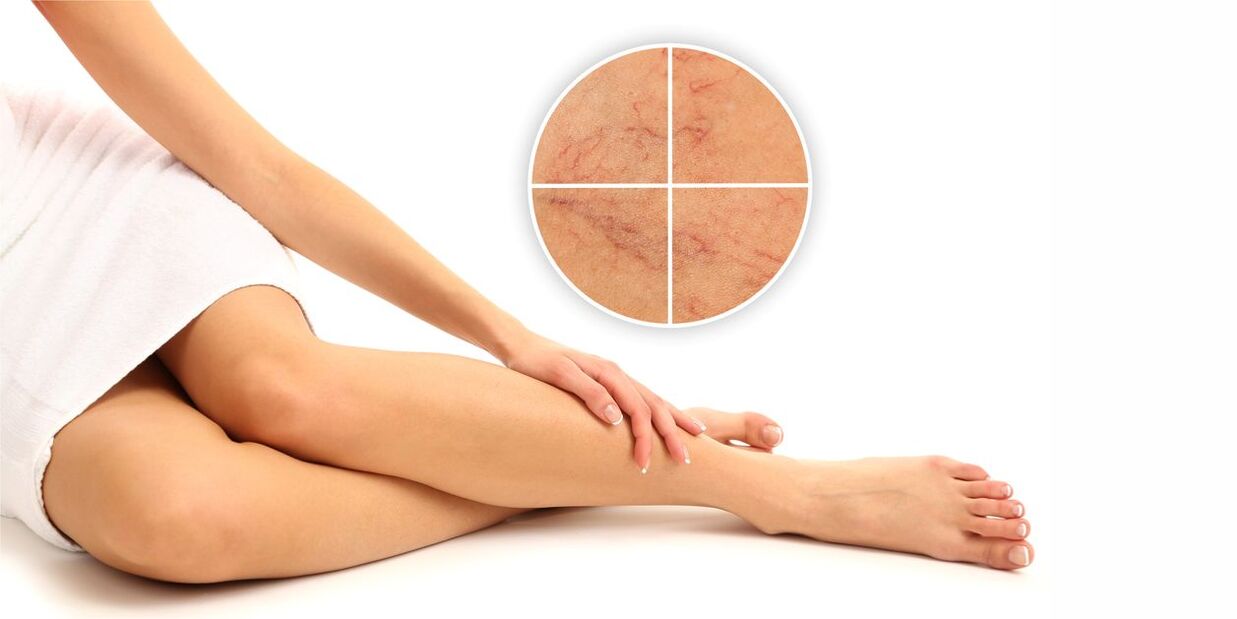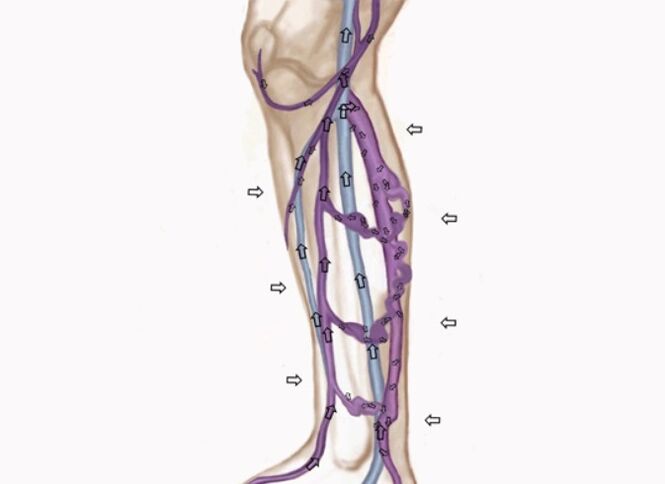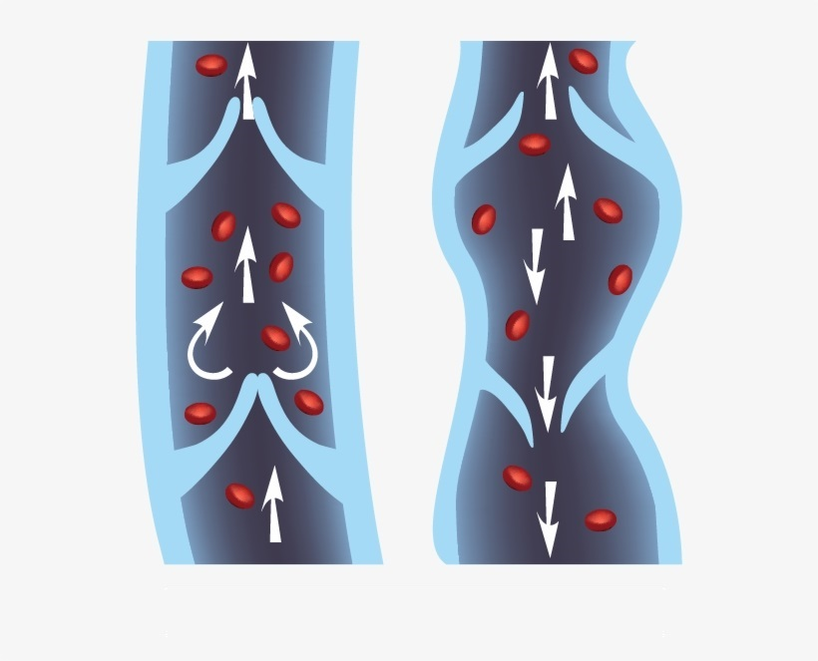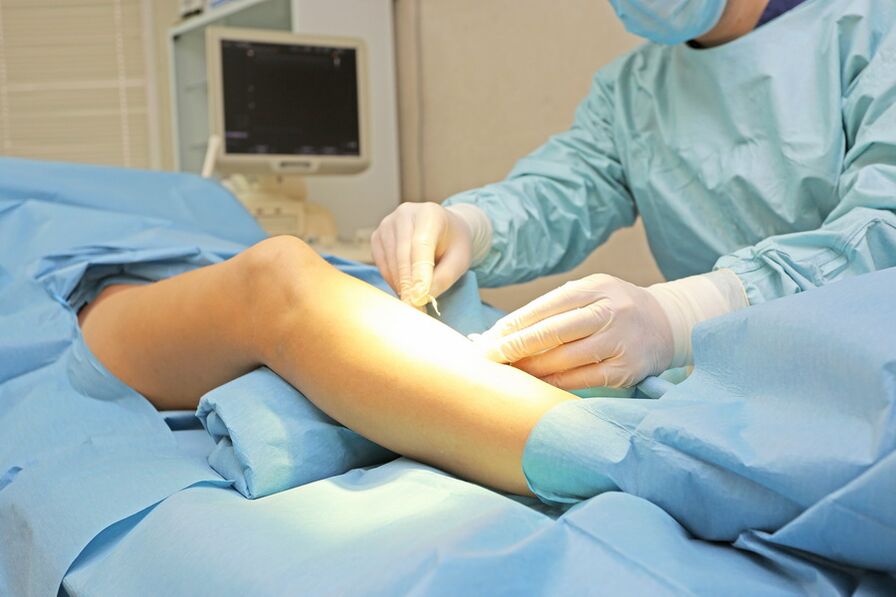Everyone has heard the term "Varicose veins or" Varicose veins. "But only a few asked the question: " What is varicose veins? "Modern sources of information give different and not always unambiguous answers. Varicose veins are the expansion and deformation of blood vessels in the superficial vein system of the lowerextremities due to weakness of the walls of the veins and dysfunction of the venous valves.

Varicose veins of the lower extremities is one of the most common diseases of mankind. According to modern European statistics, this disease affects 10% of modern men and about 30% of women. The data of state statistics for our country correlate with the general European ones. Urban dwellers suffer from venous pathology on a par with rural dwellers.
Varicose veins - what is it? How does varicose veins occur?
What happens in the varicose veins of the lower extremities, as opposed to healthy ones. The venous system of the lower extremities consists of deep and superficial veins. The deep venous system is of prime importance for the return of blood to the heart. Deep veins are surrounded by muscle sheaths and resist expansion. Superficial venous vessels do not have such good support. Therefore, they are susceptible to pathological changes under the influence of stress. The main directions of blood flow from the superficial veins to the deep, and further towards the heart and lungs, include: perforating veins, major osteal and popliteal venous valves.

With varicose veins, this process is disturbed, vertical or horizontal reflux (abnormal blood discharge) appears, which leads to varicose expansion of the vein wall through constantly increased pressure in the venous system of the superficial veins of the lower extremities. Further, there is a decrease in the speed of blood flow, stagnation in the system of superficial veins, and with increased blood clotting, favorable conditions are formed for the formation of blood clots.
Varicose veins - what is it? Varicose veins - systemic pathology
Surely, after reading on many sites dedicated to this problem, you realized that the word "varicose veins" hides a disease - varicose veins of the lower extremities. And this article will focus not only on varicose veins, the problem is much deeper. Varicose veins are a systemic disease, and with a systemic disease, various organs and systems are affected. Especially where there is an increased load on the veins. So, in a woman who has often given birth, the pelvic veins undergo varicose dilatation, in adolescence, boys develop varicocele - an expansion of the veins on the scrotum, the veins of the esophagus and stomach also expand, and with chronic constipation hemorrhoids develop - hemorrhoidal veins expand. Why does varicose veins appear in such different places? The leading reason lies in the congenital weakness of the vascular wall, which, when exposed to mechanical factors, provokes varicose veins.

What is primary and secondary varicose veins
Distinguish between primary and secondary varicose veins of the lower extremities. In the first case, the disease develops as a result of weakness of the venous wall or its damage. The second leading factor will be the increased load on the venous system. In this situation, obesity, pregnancy, weakness of connective tissue, standing work and the like can push to varicose veins.
Secondary varicose veins are the result of a mechanical violation of the venous outflow of blood. This occurs with injuries, tumors, post-thrombotic disease.
Modern data on the causes of varicose veins
The cause of varicose veins is usually hereditary. This is the weakness of the connective tissue of the venous wall. So that the vein does not expand under constant stress and remains of the same diameter, it has a special frame (or, as women say, "supporting corset"). According to modern European data, a special protein, type II collagen, works as such a scaffold in the vein wall. If an insufficient amount of this specific protein is inherited, then it is not enough in the vein wall. The skeletal function of the vein gradually decreases and, under constant pressure, it begins to expand. Once the vein is enlarged, it will never return to its previous size. Its diameter will become larger and larger over time.
Varicose veins - what is it? The mechanism of development of complications in varicose veins
The main function of the human venous system is to return blood from organs to the heart. With varicose veins, this function begins to suffer, and subsequently, the blood in the dilated veins stagnates. This is especially indicative of varicose veins of the lower extremities, when they begin to bulge out and, when the body is upright, look like inflated balls, and in neglected cases, like "bunches of grapes". Stagnation of blood in varicose veins leads to the development of complications of varicose veins - thrombosis, thrombophlebitis, trophic eczema and ulcers. In order not to lead to these serious and difficult to treat problems, it is necessary to remove varicose veins. Thus, venous stasis will go away, and with it the threat of complications.
Another important factor in the development of varicose veins is the safety of the valve apparatus of the great superficial veins (large and small saphenous veins). Each vein has special valves - these are two thin flaps that, when blood flows up to the heart, open and then slam shut, preventing the blood flow back into the leg. With an increase in the diameter of the vein, these valves stretch and begin to pass blood in the opposite direction. Further, with the progression of varicose veins, the cusps of the venous valves simply break and cease to perform their main function.

At this stage of varicose veins, the patient is offered to get rid of varicose veins using innovative methods (RF and EVLK).
There are several more modern theories of the origin of varicose veins - these are endocrine, neurotrophic, mechanical, constitutional. But their percentage is so small that it makes no sense to dwell on them in more detail.
Summing up the above, I would like to say once again that varicose veins is a systemic disease that manifests itself in the weakness of the framework of the venous wall, and arises in any organ where an increased load falls on the veins.
How varicose veins and heredity are related
According to modern research, if both parents have varicose veins, then the risk of developing this disease in children increases by 60%. Therefore, if you have relatives suffering from varicose veins of the lower extremities, then you need to know the factors that can serve as an impetus for the onset of varicose veins in you. The life of a modern person is often replete with factors for the development of varicose veins, so it is better to once again undergo a competent medical examination of the venous system.

Varicose veins - what is it? Diagnosis of varicose veins
A good and correct diagnosis of varicose veins can only be carried out by a professional specialist - a phlebologist. At the consultation, the doctor will conduct a modern examination, which includes palpation, questioning, clarification of complaints, in some cases, testing (cough, reflux, tourniquet). Based on the results obtained, the doctor makes a preliminary diagnosis, and to clarify the diagnosis, he independently conducts an ultrasound scan, less often contrast phlebography, spiral computed tomography, plethysmography, phlebometry and dopplerometry. After all examinations, the doctor can establish a diagnosis: "Venous expansion of the lower extremities. "
Varicose veins - what is it? Modern treatment of varicose veins
Treatment of varicose veins may not guarantee a 100% result even after surgery. Innovative European technologies that allow you to get a good treatment result with minimal trauma can be called non-surgical.

Without surgery, varicose veins are treated with several modern medical methods:
- Laser treatmentor laser coagulation of varicose veins. This method eliminates the return flow of blood in the superficial and perforating veins using the thermal energy of laser radiation. The entire procedure is performed without incisions, a light guide is inserted through puncture, then the vein is obliterated. After completion, apply compression garments. Today it is the best technology for treating varicose veins.
- Radio frequency treatment (RFA, RFO).One of the best innovative methods is aimed at treating the saphenous veins and eliminating the reverse blood flow. The entire procedure is performed under anesthesia, without incisions.
- Sclerotherapy treatment. A drug is injected into the vein, which glues the vein.
- Conservative treatmentincludes bandaging, wearing compression stockings, the use of medications, a set of physical exercises.
With a hereditary predisposition to the disease, it is necessary to undergo annual consultations with an ultrasound examination with a good phlebologist of the European level. Modern treatment of varicose veins will be based on the age of the patient, the severity of the pathology, concomitant diseases, and other significant factors.
Varicose veins - what is it? Home treatment
How is varicose veins treated? Many of us ask this question, but you can carry out simple procedures at home and avoid aggravated forms of the disease.
But is it realistic to achieve great success at home? Treatment with folk remedies includes the ingestion of various infusions and decoctions, rubbing into the skin of self-made ointments, applying compresses soaked in healing plant juices. The most commonly used tincture of horse chestnut fruit, nutmeg, garlic-honey mixture, hazel tincture, decoction of hop cones, apple cider vinegar. How to recover completely without resorting to the services of doctors? This question is of interest to many. Unfortunately, the "green pharmacy" does not have the same potential as the experience of a physician with the latest advances in phlebology. Therefore, it is better not to place unnecessary hopes on folk remedies. As a precautionary measure, yes, please. But, unfortunately, they cannot seriously help. Otherwise, so many medical techniques would not have been invented in the fight against varicose veins.

Varicose veins - what is it? Prevention of varicose veins
- Avoid stagnant blood, move more, wear loose clothing.
- Do not overdo it with fever treatments.
- Monitor your weight.
- Wear comfortable shoes.
Now you know what insidious varicose veins are, how to treat this disease and that for prevention you need to be examined by a good phlebologist, adhere to a correct lifestyle and monitor your health in general. These simple tips are relevant for residents of any corner of our country.
Surprisingly, the simplest measures can prevent this disease. Treatment (the cost of which can increase in advanced cases) will be short-lived if you have taken care of your feet. Doubt? Take a look at others - many have varicose veins, photos do not even need to be searched on the Internet. Most of the patients seriously suffering from varicose veins, at the initial manifestations, did not pay attention to the unpleasant symptoms, thinking, "maybe it will go away by itself. "Alas, it won't.
The conclusion suggests itself - do not ignore yourself, your body and the phlebologist's office if the first varicose veins appear on your legs.
I have seen a lot in my "varicose" experience and I know how to quickly put you on your feet. In the literal sense of the word. Therefore, look at your feet right now and, if you notice something suspicious, sign up for a consultation at the phlebological center. Health and good luck to you!

















